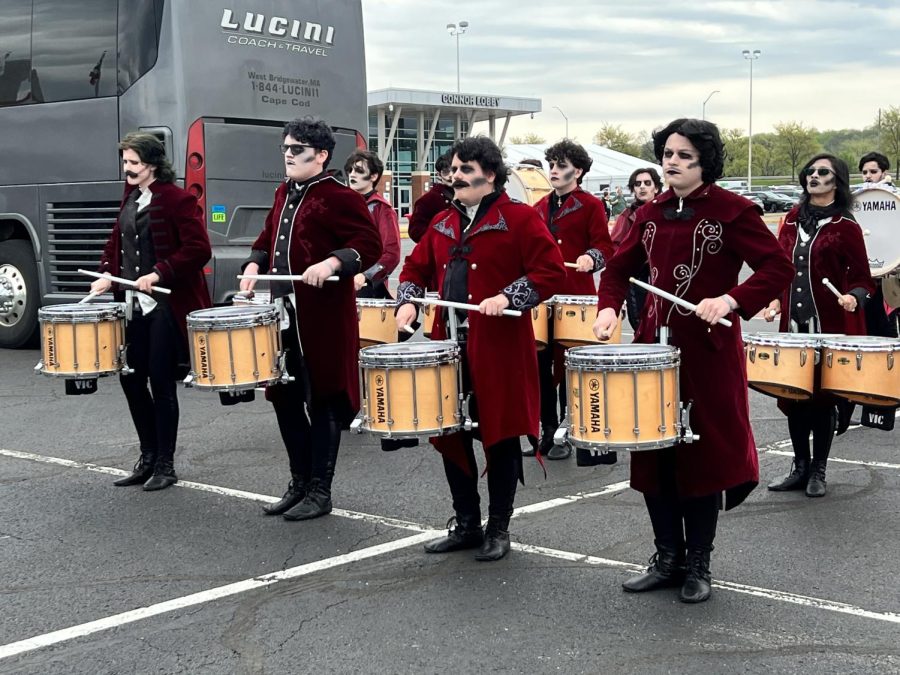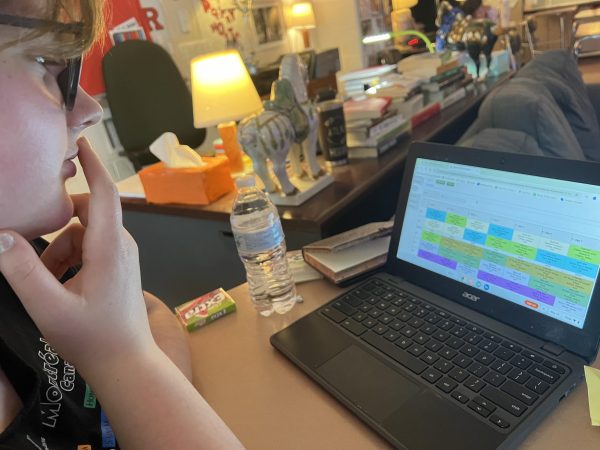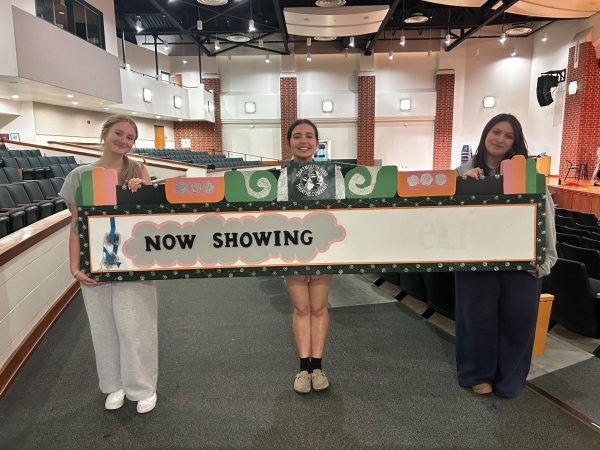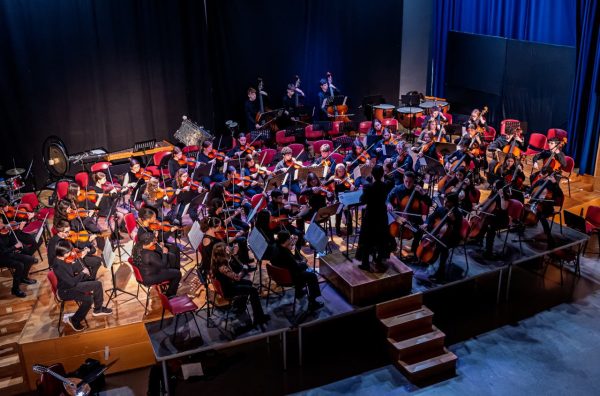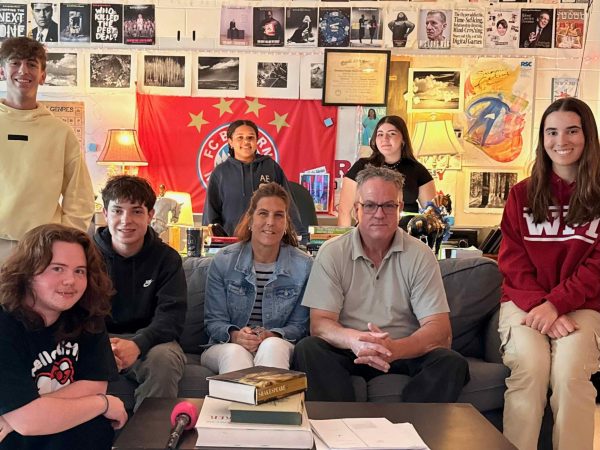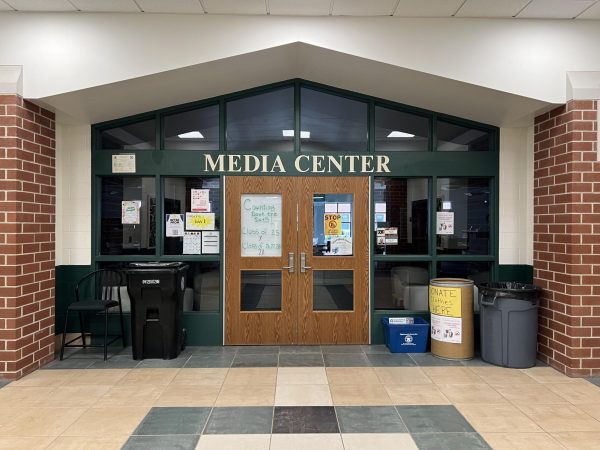Indoor Percussion: From the Desk of Edgar Allen Poe
The DHS percussion department seems to have a crystal ball when it comes to pop culture. Last year’s “The Curse of Medusa,” aligned perfectly with the popularization of books like The Song of Achilles and Circe by Madeline Miller that aestheticized Greek folklore for a new generation. Much of Wednesday’s unimaginative storyline follows alumni Edgar Allen Poe’s secret society mystery, the NightShades. This year’s percussion show, The Raven: From the Desk of Edgar Allen Poe, yet again predicts pop culture, recreating the widespread awe and attention that Wednesday received upon its release. Arguably, the Indoor Percussion show is significantly more authentic to its source material.
The setting is gothic, the house is lined with portraits, the most notable one of a Raven, and the entire show does not stray from the color palette of mahogany, blacks, and other muted tones. The makeup of every musician is stunning, something modern “goths” should take notes from, with vacant-of-color faces, and charcoaled eyes and necks; a look that distills each character’s permanent derangement and fear. The ghost of Lenor, Edgar’s late wife, enters after Edgar himself, light-footed and entrancing, but clearly dead, a fact that Edgar himself isn’t equipped to cope with. The walls of the gothic house move impressively, with working doors that different percussion musicians flood out of, clad in brown and maroon tailcoats. And the name, The Raven, does not disappoint, At first, one could think perhaps Ethan Church, dressed as a Raven in the center of the pit is the only source of madness, but like a high-class restaurant, Dartmouth doesn’t cheap out on the menu, with no stinginess on their part, a flock of mischievous and demonic ravens bursting onto the floor, herding the musicians throughout the performance.
One can hear bits and pieces of the poem in the background throughout the performance, “nevermore,” being repeated as is done by the Raven in the original poem. The music can become disorganized and chaotic, and you will find yourself more times than one saying, “Is this done yet?” Not out of boredom or dislike, but out of anticipation for the final spells of madness to take their ultimate toll, and wonderment at how such an enthralling show could possibly end. I do personally appreciate the separation of each section during the beginning and throughout the show, as compared to previous years when all sections were much more integrated. When they are contrasted, each section can be highlighted while creating musical and physical juxtaposition to other sections.
The overall theme of the show is disorganized, representing Poe’s descent into madness, and this is seen when some percussionists are using doors rather than instruments to make music, and the multiple times when sections can be seen flailing about in mania. The complex movements combined with the emotional turmoil each individual has to display throughout the show make this one of the most acting-heavy shows the Indoor Percussion has ever done.
This bold choice that required full investment from every coordinator and musician paid off according to Director of Percussion Thomas “Reset” Aungst. “In the 30 years I’ve been here,” he said, “it is a magical show, it was almost like they put a spell on the audience. There was just this cloud of magical dust, the people were going nuts.”
The finals in the University of Dayton Arena on Saturday, April 22, was the climax of the long season for the Indoor Percussion, finishing sixth overall, but perhaps first in crowd approval according to witnesses. However, the final ranking has affected many of the students, despite how well many of the coordinators felt it went. Many of the musicians themselves feel a mix of embarrassment and surprise at the results of the competition. “It has made us all more passionate about next year. We refuse to let this happen again,” said a tenor player about the ranking.
However, the growth and enjoyment the last four months have provided the group is undeniable, especially because the group was relatively young.“It was a young group, we grew a lot, and we broke through at our first show in February. It was the most rewarding group to work with because of how young they were, and then they performed like professionals at the finals. It’s neat to see them evolve in that way,” said Mr. Aungst about the progress made throughout the season.
But one has to wonder, how is the time commitment of indoor percussion justified with some weeks nearing 50 hours of practice? For many the time commitment feels like less of a commitment and more of an outlet, a constant, and a necessary step on the route to greatness. “The life skills that these students learn in four months is invaluable. You’re learning to work towards perfection. These students learn the value of work, team camaraderie, and excellence,” said Mr. Aungst.
An excellence that realistically is rare in the real world. Not often can one be Division I, CEO, valedictorian, excellent, but indoor percussion achieves that excellence year after year, retaining their rankings among the best in the world. And unlike the other types of excellences mentioned, Indoor Percussion sees no other option for all of their musicians, not every member of a class can be valedictorian, but in this program, every musician needs to be world-class.
“Not everyone can be successful. If you are on a sports team, they have a bench, so you may not play. When you’re in the group, you have to step up to the plate just like the seniors, you have to achieve excellence,” said Mr. Aungst. “In academics, not everyone is going to get As, in indoor percussion, you need to get an A.”
Mr. Aungst believes his musicians not only met this excellence this year but inspired ravenous awe in the finals.

